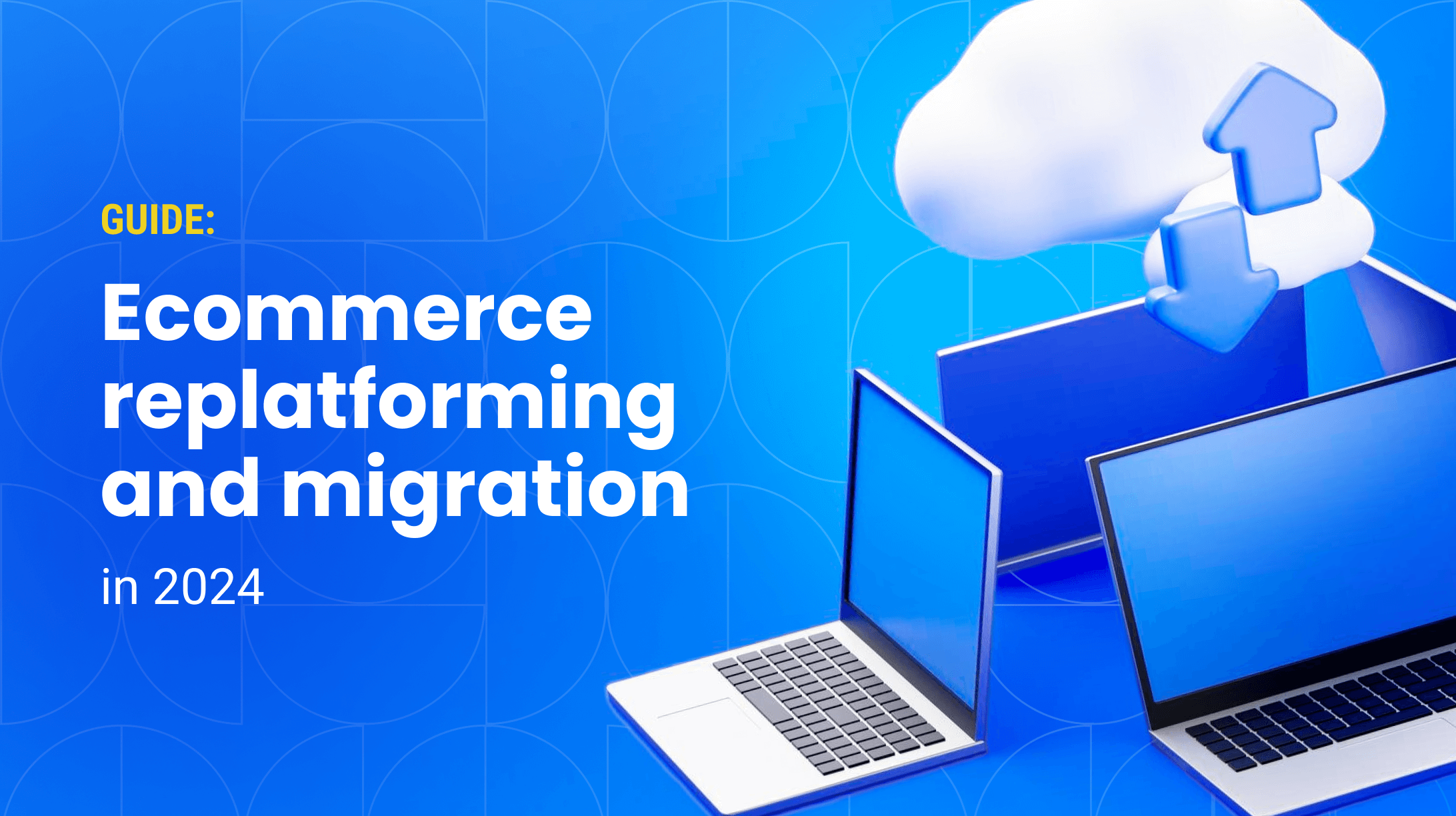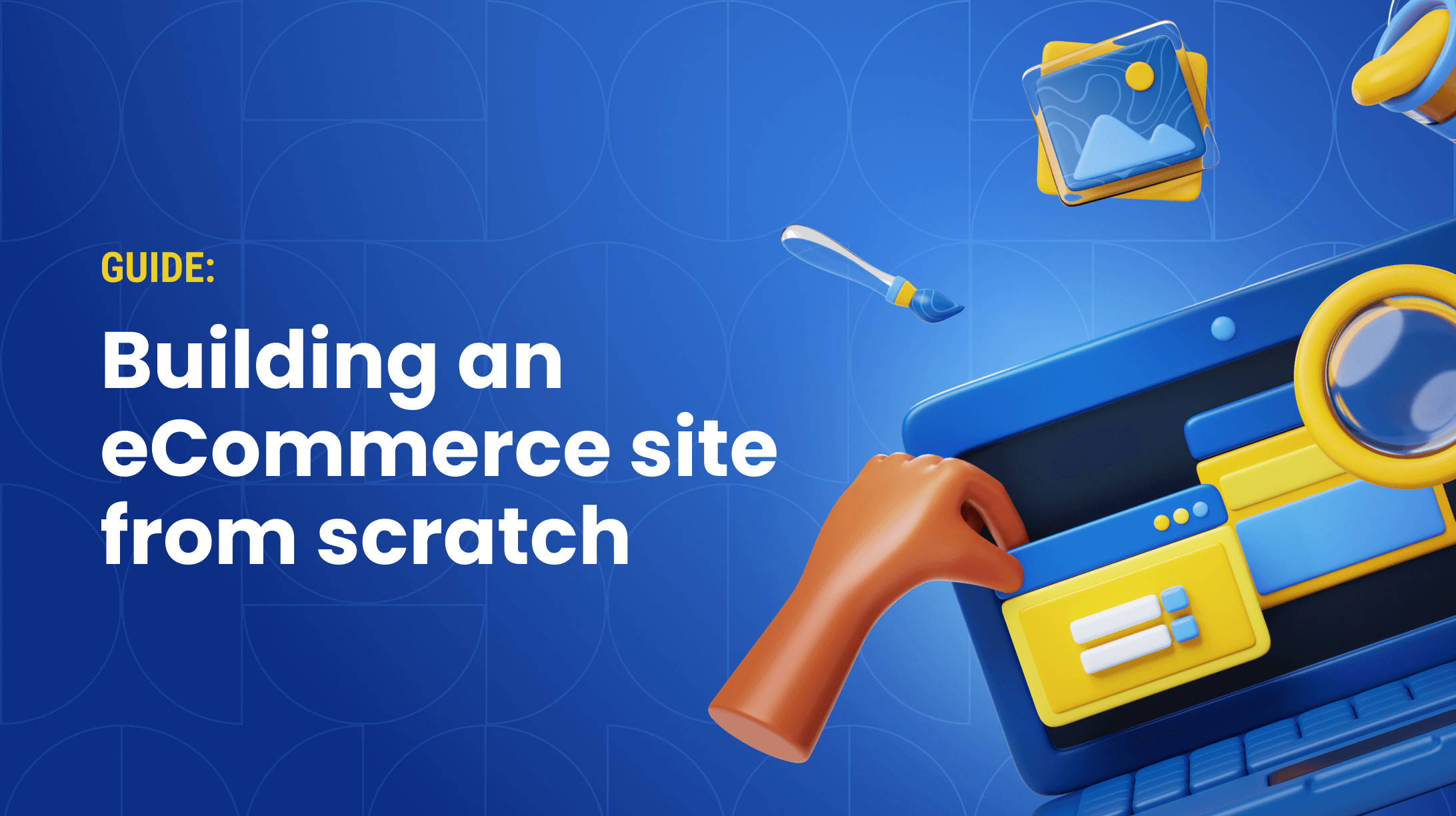0%
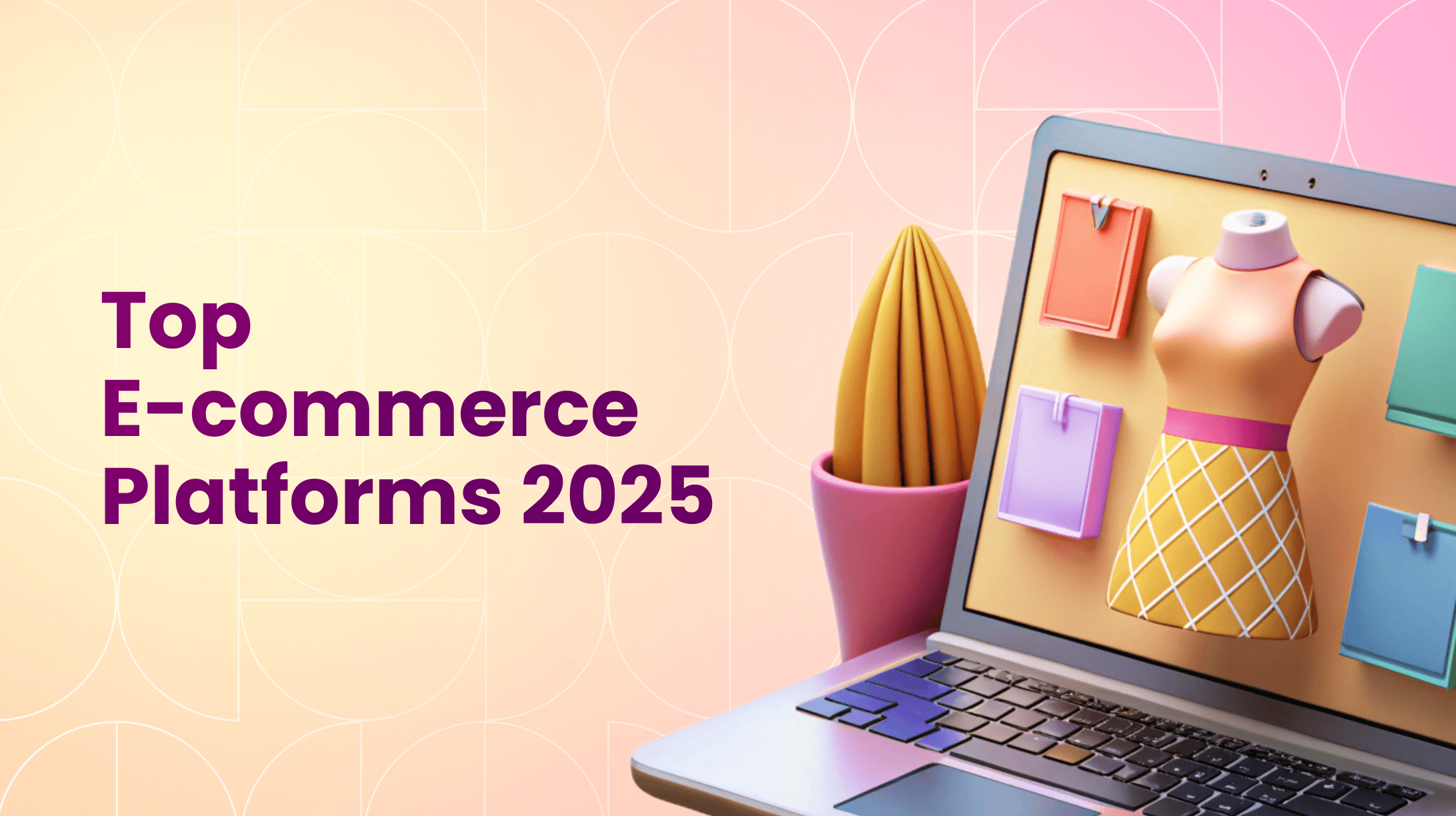
By 2040, studies suggest that 95% of all purchases will happen online. This future creates an urgent problem for any business today: you need an e-commerce platform that will not only work now but also evolve and grow for the next 15 years, whether you use a DIY builder or professional web development services.
To help you make this critical choice, this article examines the top e-commerce platforms in 2025. We evaluate them on their ability to scale, integrate new technology, and remain a strong foundation for your business well into the future.
What is an E-commerce Platform?
An e-commerce platform is the fundamental software application that allows businesses to present, manage, and sell their products or services directly over the internet. Think of it as the digital engine and foundation for your entire online sales operation, powering everything from the storefront that your customers see to the complex backend processes that happen behind the scenes.
At its core, a modern e-commerce platform is responsible for several critical functions:
- Storefront Presentation – It provides the framework to create and design your online store, displaying your products with images, detailed descriptions, variants (like size or color), and customer reviews.
- Shopping Cart and Checkout – It enables customers to select items, hold them in a virtual shopping cart, and proceed through a secure checkout process to complete their purchase.
- Payment Processing – It integrates with payment gateways (like Stripe or PayPal) to securely accept various payment methods, including credit cards, digital wallets, and sometimes installment plans.
- Inventory and Order Management – It acts as a central hub where you can track stock levels in real-time, update product availability, and manage the details of every order from receipt to fulfillment.
- Tax and Shipping Calculations – It automatically calculates appropriate sales tax and provides customers with various shipping options and accurate costs.
Beyond these core features, today's platforms often include integrated tools for marketing (like email campaigns and discount codes), customer relationship management (CRM), and analytics to help you understand sales performance and customer behavior.
Key Selection Factors
Beyond core features, several strategic factors will determine how well a platform serves your business long-term. These considerations help ensure your chosen solution aligns with both your current operations and future ambitions.
Technical Resources & Support
Your team's technical capability should guide your platform choice. Solutions like Adobe Commerce often require dedicated developers, while Shopify and Wix provide extensive customer support, making them more accessible for teams without deep technical expertise.
Integration Capabilities
Consider how well each platform connects with your existing tools like CRM systems and marketing software. Robust integration capabilities prevent data silos and manual workarounds, creating a more efficient operational workflow across your business. This is especially critical when selecting the best B2B platform, which needs to connect smoothly with your systems like ERP and handle complex customer groups.
Mobile & Omnichannel Experience
With most customers shopping on mobile devices, ensure your platform delivers a flawless mobile experience. Additionally, if you plan to sell across social media and marketplaces, built-in omnichannel features will save significant time and effort.
Payment Processing and Transaction Fees
Evaluate the payment options and associated costs for each platform, as these can significantly impact your profit margins. Some platforms charge additional transaction fees unless you use their proprietary payment system, while others offer more flexibility with lower rates.
SEO and Marketing Capabilities
Your platform's built-in SEO features and marketing tools directly affect your store's visibility and customer acquisition. Look for platforms that offer comprehensive SEO controls, email marketing integration, and analytics tools to help drive organic growth and measure campaign performance.
Security and Compliance Features
Ensure your chosen platform provides robust security measures and complies with relevant regulations like PCI DSS and GDPR. Strong security protects both your business and customer data, while built-in compliance features help you avoid potential legal issues and build trust with your audience.
The Top 10 E-Commerce Platforms
Choosing your platform is one of your first and most important business decisions. The list below breaks down the leading options to help you understand which one might be the best fit for your specific needs and skills.
1. Shopify
Shopify is an all-in-one commerce platform designed to help you start, grow, and manage a business. It handles everything from hosting and security to payment processing, allowing you to focus on sales and marketing. You can customize your online store with themes and extend its functionality through a massive app store.

- Best For – First-time store owners and businesses of all sizes that want a comprehensive, easy-to-start solution.
- Key Strengths – Extremely user-friendly, huge app ecosystem, reliable hosting and security, and powerful marketing tools.
- Key Thing to Know – While easy to start, monthly costs can increase significantly with added apps and transaction fees if you don't use Shopify's built-in payment system.
2. BigCommerce
BigCommerce is a scalable, software-as-a-service (SaaS) platform built for business growth. It stands out by including many advanced features directly in its standard plans, reducing the need for extra apps. The platform is designed to handle high-volume sales and complex product catalogs with ease.
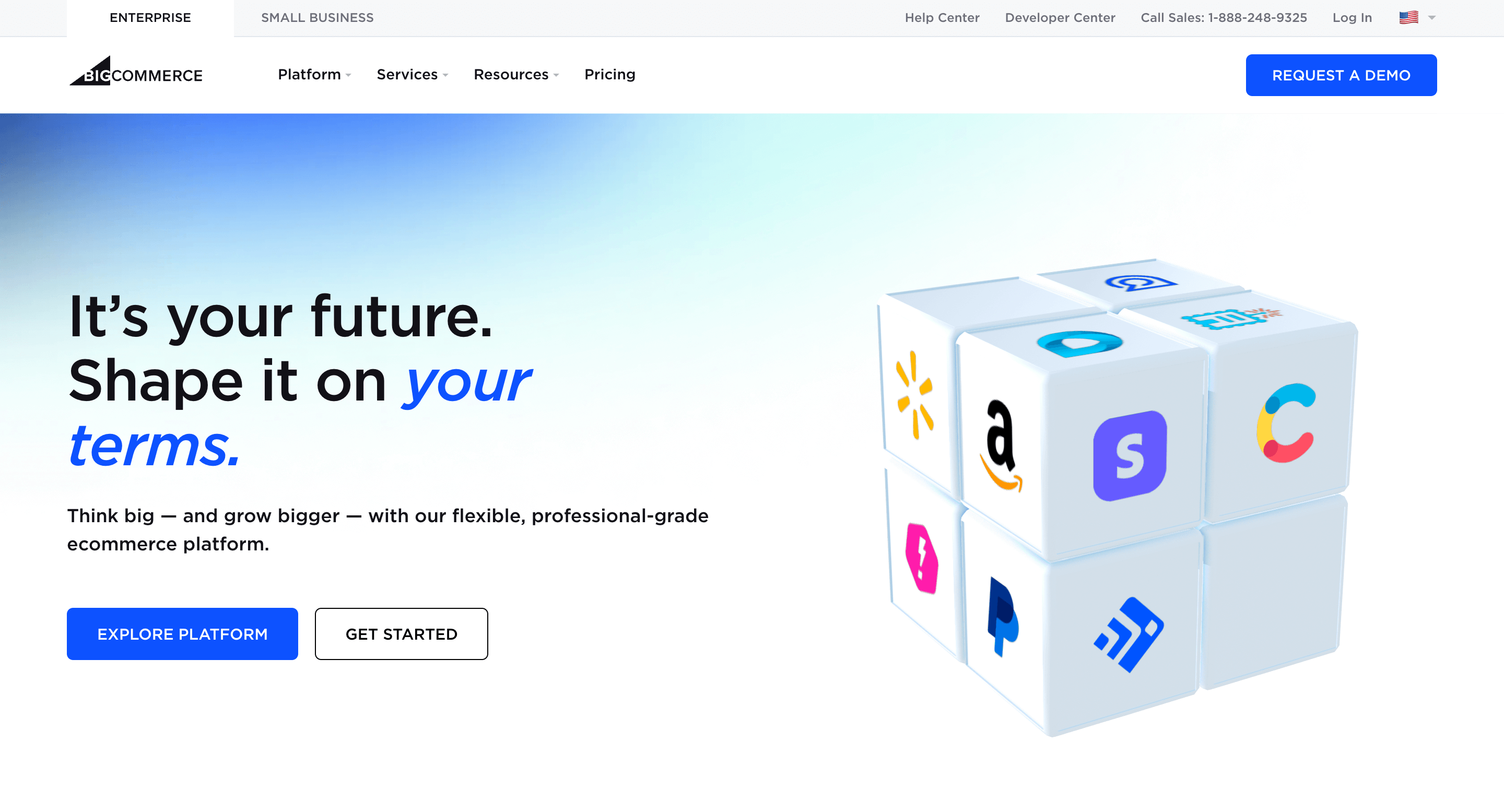
- Best For – Fast-growing and medium-to-large businesses that need powerful, built-in features without app overload.
- Key Strengths – No transaction fees, robust built-in features (like product variants and SEO tools), and strong B2B capabilities.
Key Thing to Know – Its plans have sales volume thresholds; if you exceed your plan's limit, you are automatically upgraded to the next pricing tier.
3. WooCommerce
WooCommerce is a free, open-source e-commerce plugin for WordPress. It transforms any WordPress website into a fully functional online store, offering unparalleled customization. Because it's open-source, you have complete ownership and control over your data and store design. A detailed WooCommerce vs. Magento comparison can further help you evaluate the open-source landscape.
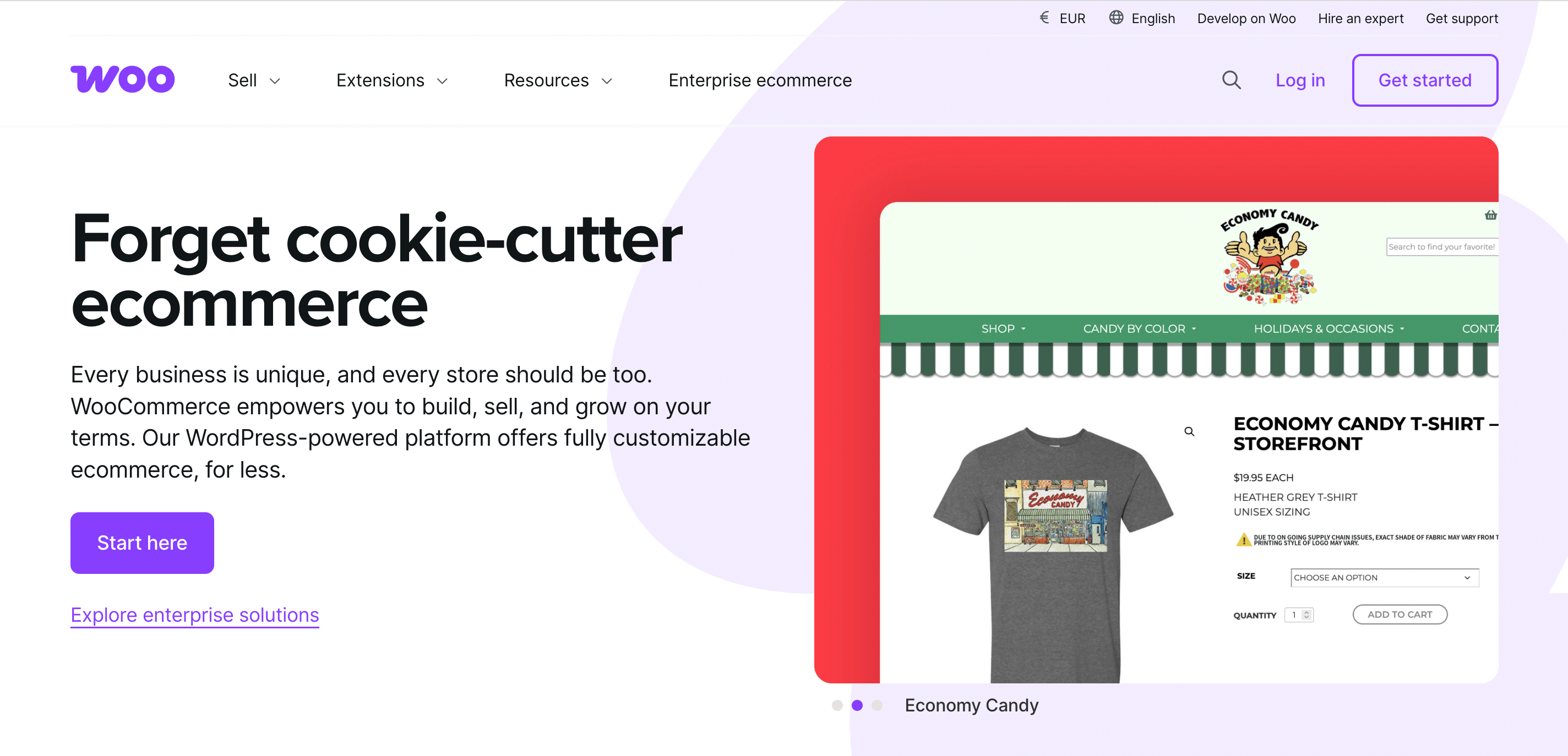
- Best For – WordPress website owners and those with technical skills who want maximum control and customization.
- Key Strengths – Free to use, deeply customizable, full data ownership, and integrates seamlessly with the WordPress ecosystem.
- Key Thing to Know – You are responsible for your own web hosting, security, backups, and updates, which requires more technical comfort or a budget for a developer.
4. Wix
Wix eCommerce is part of the Wix website builder, known for its intuitive drag-and-drop design interface. It allows you to build a visually appealing online store without needing to code. The platform is an all-in-one solution that includes hosting, security, and a range of built-in sales features.
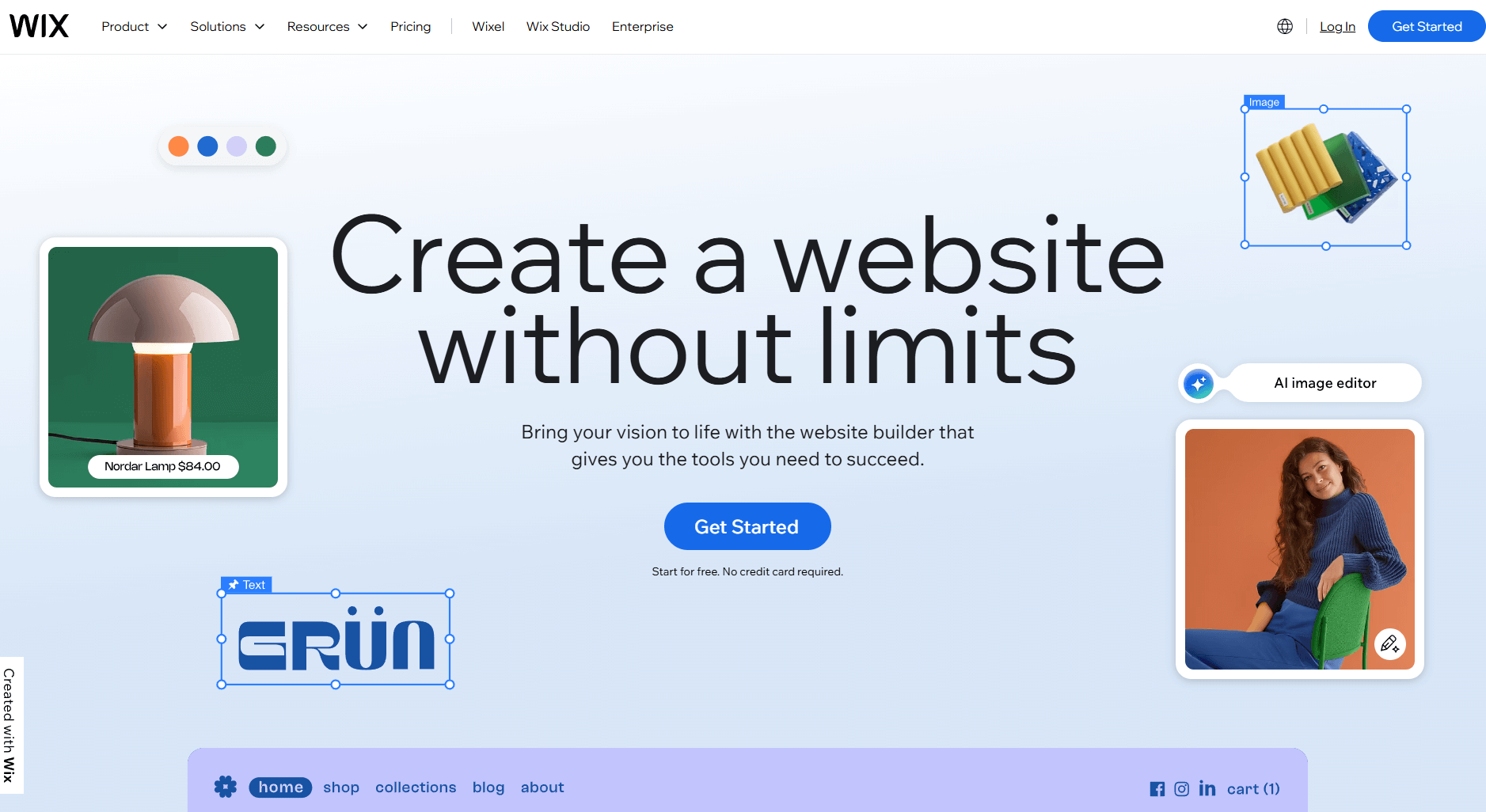
- Best For – Small businesses, artists, and creatives who prioritize beautiful, simple design and ease of use.
- Key Strengths – Incredibly easy-to-use editor, beautiful designer templates, and a true all-in-one solution.
Key Thing to Know – The design flexibility comes with a trade-off; you cannot easily switch templates without rebuilding your entire site, which can limit future redesigns.
5. Adobe Commerce (Magento)
Adobe Commerce (powered by Magento) is a highly flexible and powerful e-commerce platform, offered both as an open-source version and a premium enterprise version. Magento provides developers with complete freedom to build a fully customized shopping experience tailored to specific business needs.
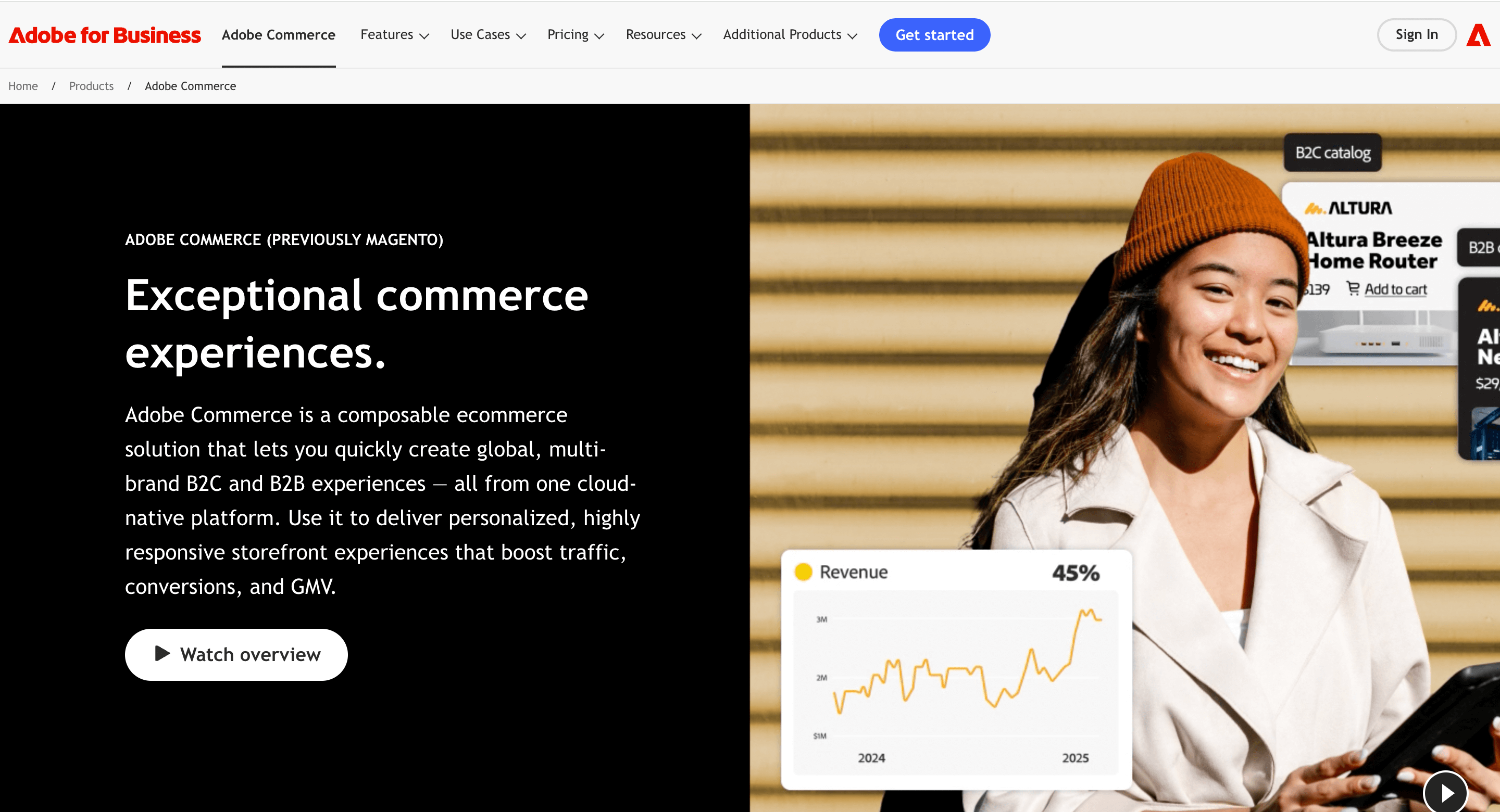
- Best For – Large businesses with in-house development teams that require a completely tailored, enterprise-grade solution.
- Key Strengths – Unmatched flexibility and customization, can handle enormous product catalogs, and powerful B2B features.
- Key Thing to Know – The total cost of ownership is very high, encompassing development, hosting, security, and ongoing maintenance, making it prohibitive for small-to-medium businesses.
6. Squarespace
Squarespace is a website builder renowned for its stunning, award-winning templates and strong focus on visual storytelling. Its e-commerce functionality is built directly into the platform, making it seamless to create a beautiful online store that aligns with a strong brand identity.

- Best For – Creatives, artists, and brands where visual aesthetics and a polished portfolio are as important as sales.
- Key Strengths – Industry-leading design and templates, excellent blogging tools, and strong video integration for products.
Key Thing to Know – The platform's checkout process is less customizable than on competitors like Shopify, which can be a limitation for brands with specific conversion needs.
7. Salesforce Commerce Cloud
Salesforce Commerce Cloud is an enterprise-level, cloud-based solution designed for large global brands. It leverages artificial intelligence to deliver personalized shopping experiences at scale and can handle complex, high-volume sales across multiple countries and channels.
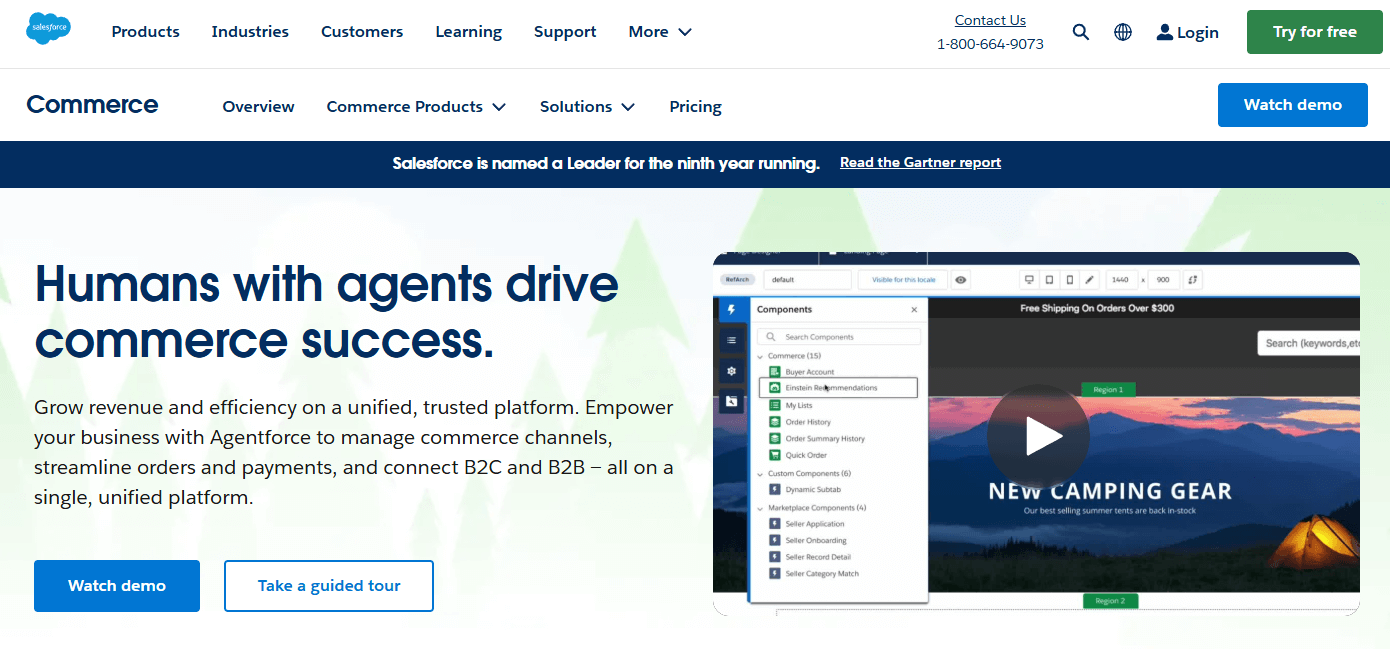
- Best For – Large enterprises and global brands with complex sales cycles, international customers, and dedicated IT resources.
- Key Strengths – AI-powered personalization, handles massive scale and global operations, and integrates with the full Salesforce CRM suite.
- Key Thing to Know – This is not a self-service platform; it requires a dedicated technical team and a very significant budget for implementation and ongoing management.
8. Square Online
Square Online is the e-commerce arm of the Square payment ecosystem. It is designed to seamlessly sync online and in-person sales, making it incredibly easy for physical retailers to establish an online presence. Inventory and customer data are automatically updated across all sales channels.
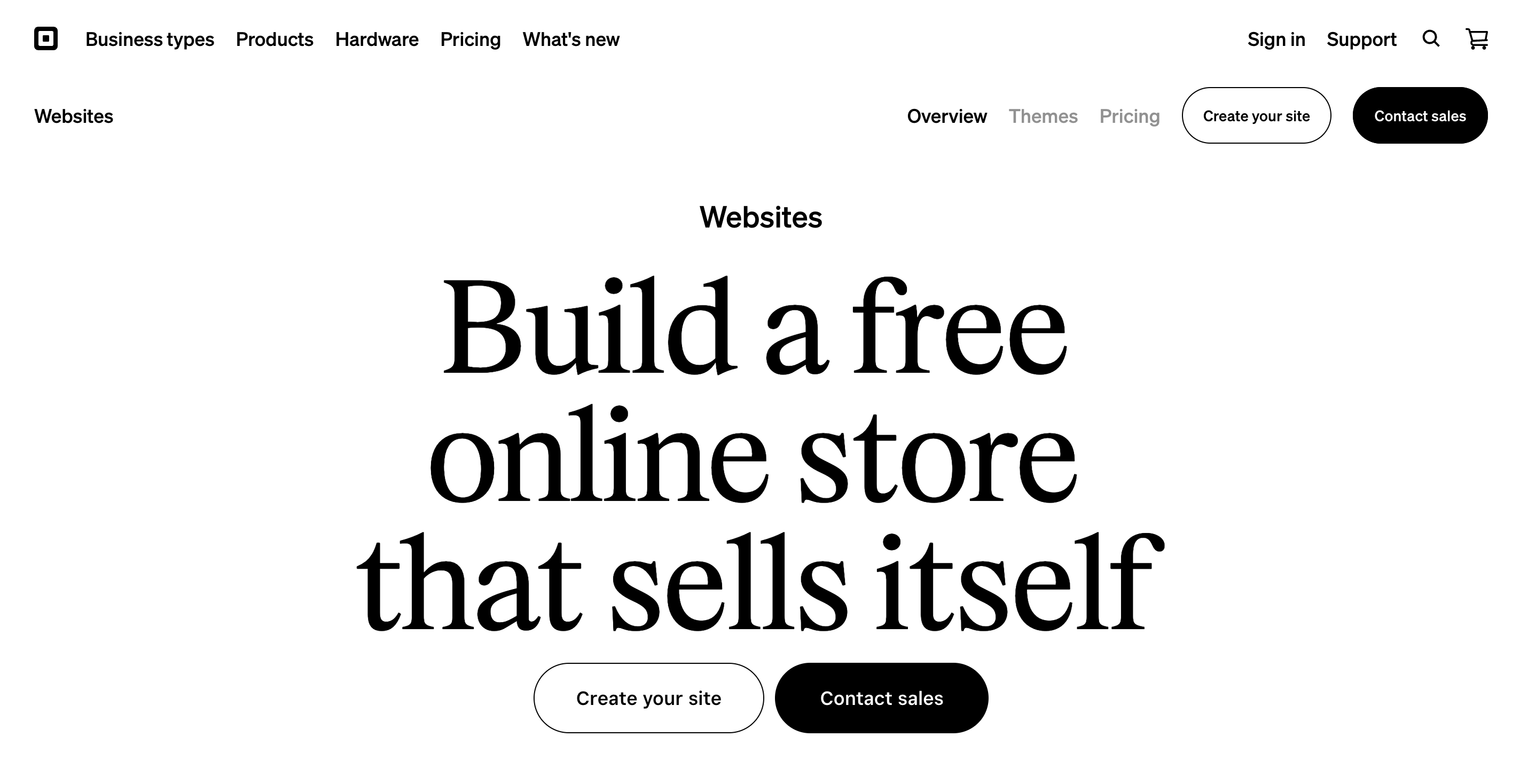
- Best For – Brick-and-mortar stores, restaurants, and markets already using Square POS that want to add online sales.
- Key Strengths – Seamless integration with Square POS, real-time inventory syncing, and a free plan is available to start.
Key Thing to Know – Its core strength is the Square ecosystem; if you don't use Square for in-person payments, other platforms may offer more powerful online-specific features.
9. Big Cartel
Big Cartel is a streamlined platform built specifically for artists, makers, and creators to sell their work online. It emphasizes simplicity and puts the creative work front and center, with a straightforward interface that gets you set up quickly.

- Best For – Independent artists, makers, and creators with smaller product catalogs (up to 500 products).
- Key Strengths – Simple, clean interface; affordable pricing with a free plan; designed specifically with artists in mind.
- Key Thing to Know – It is built for simplicity, not scale. Features are limited compared to larger platforms, making it less suitable for fast-growing, complex businesses.
10. Shift4Shop
Shift4Shop is a robust e-commerce solution that offers a full-featured online store builder with no monthly fees, provided you use their Shift4 payment processing. It includes a comprehensive set of built-in tools for marketing, SEO, and order management.
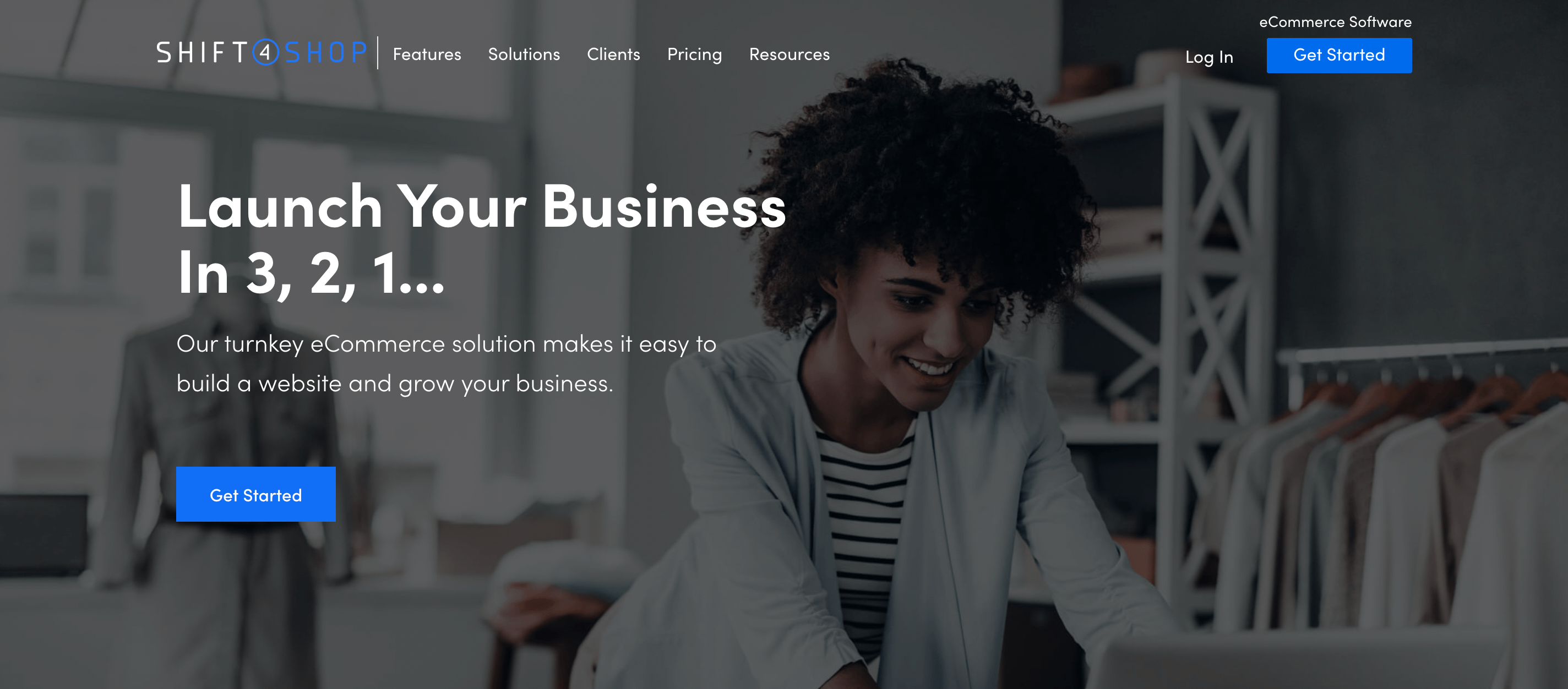
- Best For – Cost-conscious entrepreneurs and small businesses who are comfortable with a specific payment processor and want a full-featured platform.
- Key Strengths – Potentially zero monthly fee, includes a wide array of built-in features, and is highly customizable.
- Key Thing to Know – The "free" plan is contingent on using Shift4 as your payment processor, and the interface can have a steeper learning curve than more user-friendly options like Shopify.
11. Prestashop
PrestaShop is a flexible, open-source e-commerce solution that gives merchants full control over their online store. Unlike hosted platforms, it requires you to manage your own web hosting and server environment, but offers extensive customization through modules and themes.
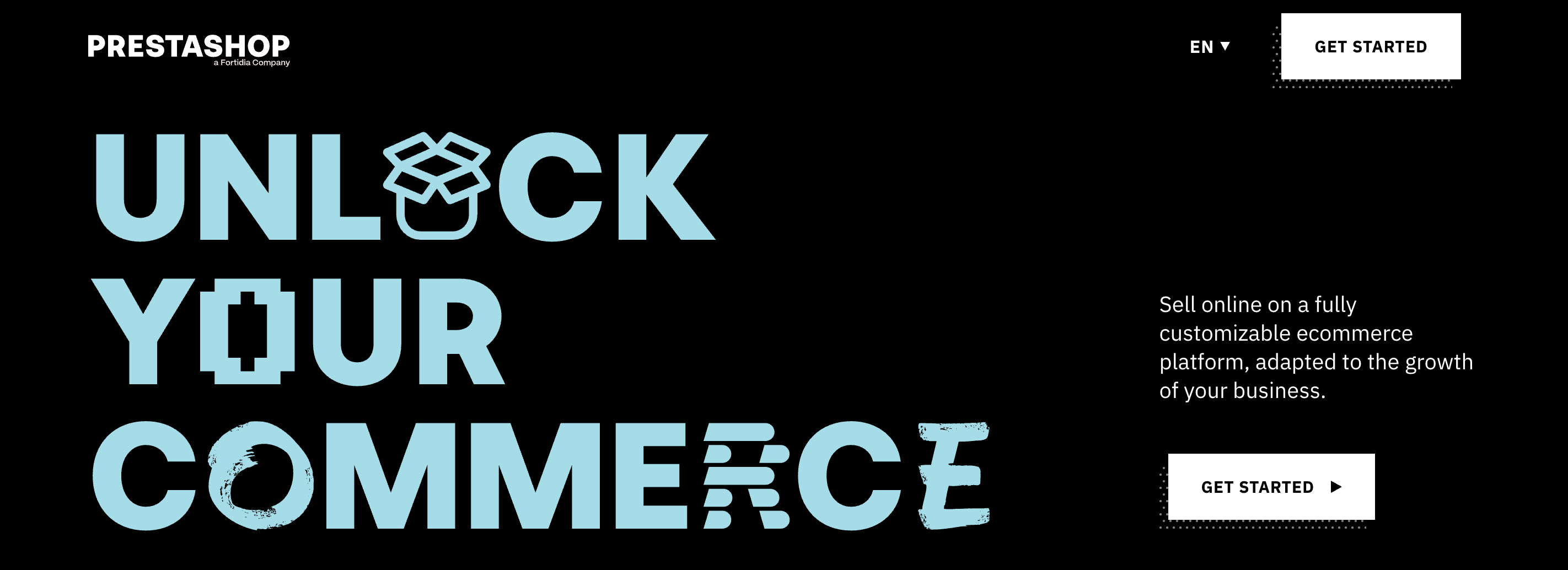
- Best For – Technically-inclined users, developers, and businesses that want complete ownership and customization of their storefront.
- Key Strengths – Free to download and use, highly customizable with thousands of modules and themes, and supports a wide range of payment gateways.
- Key Thing to Know – While the software itself is free, you are responsible for all hosting, security, and maintenance costs, and premium modules or professional web development services can add significant expense.
12. OpenCart
OpenCart is a free, open-source e-commerce platform that is a direct competitor to WooCommerce and PrestaShop. It is known for being lightweight and having a straightforward administration interface.
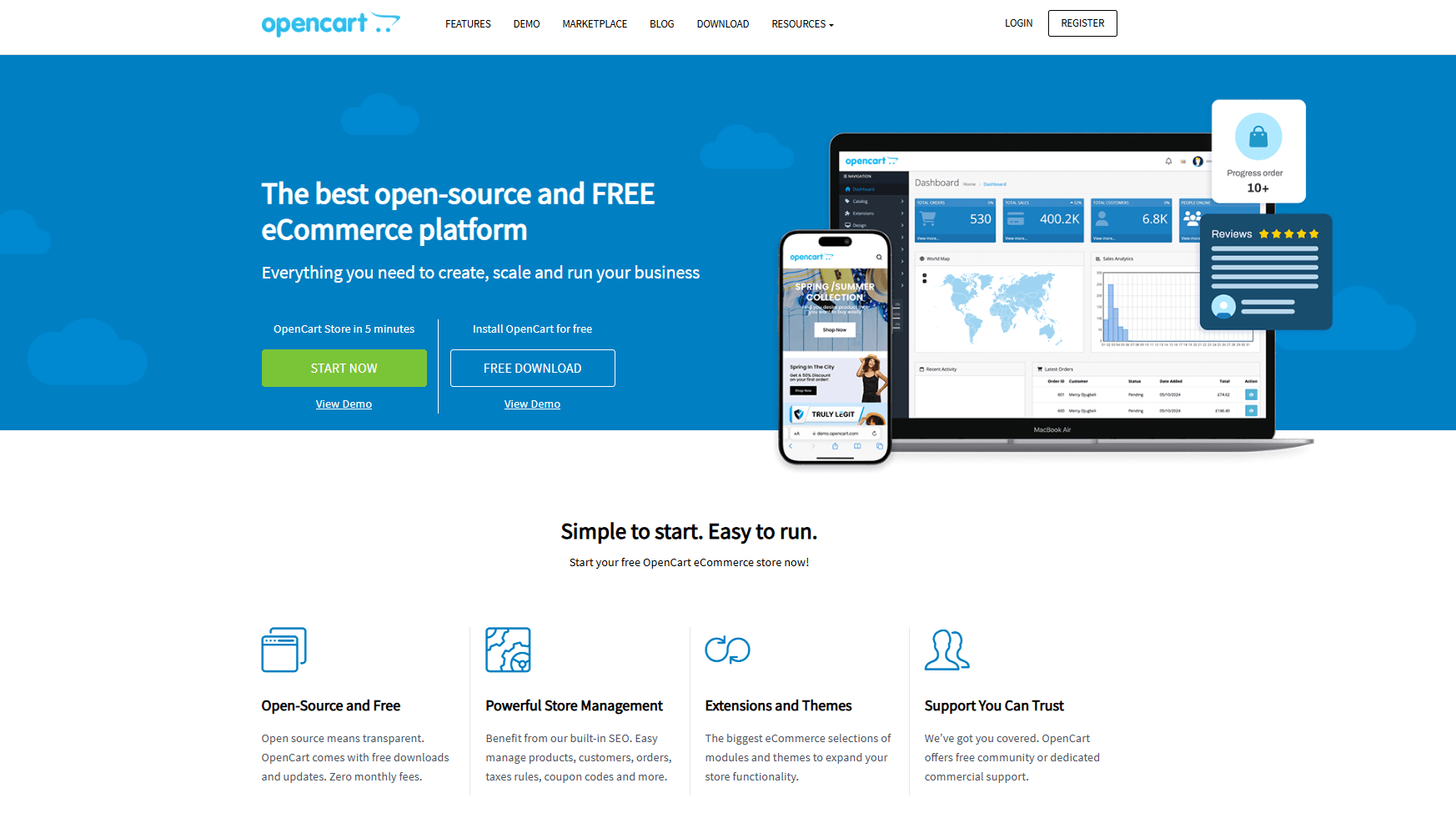
- Best For – Small to medium-sized businesses familiar with self-hosted solutions who find PrestaShop too complex.
- Key Strengths – Simple setup for an open-source platform, a wide range of extensions, and a strong, supportive community.
- Key Thing to Know – Like other open-source options, you are responsible for hosting, security, and maintenance. The quality of extensions can be inconsistent.
13. Shopware
Shopware, a dynamic open-source e-commerce platform from Germany, has gained immense popularity across Europe. It focuses on a "headless" architecture, allowing businesses to deliver unique brand experiences. Known for its flexibility and scalability, Shopware empowers retailers to customize their online presence and drive customer engagement effectively.
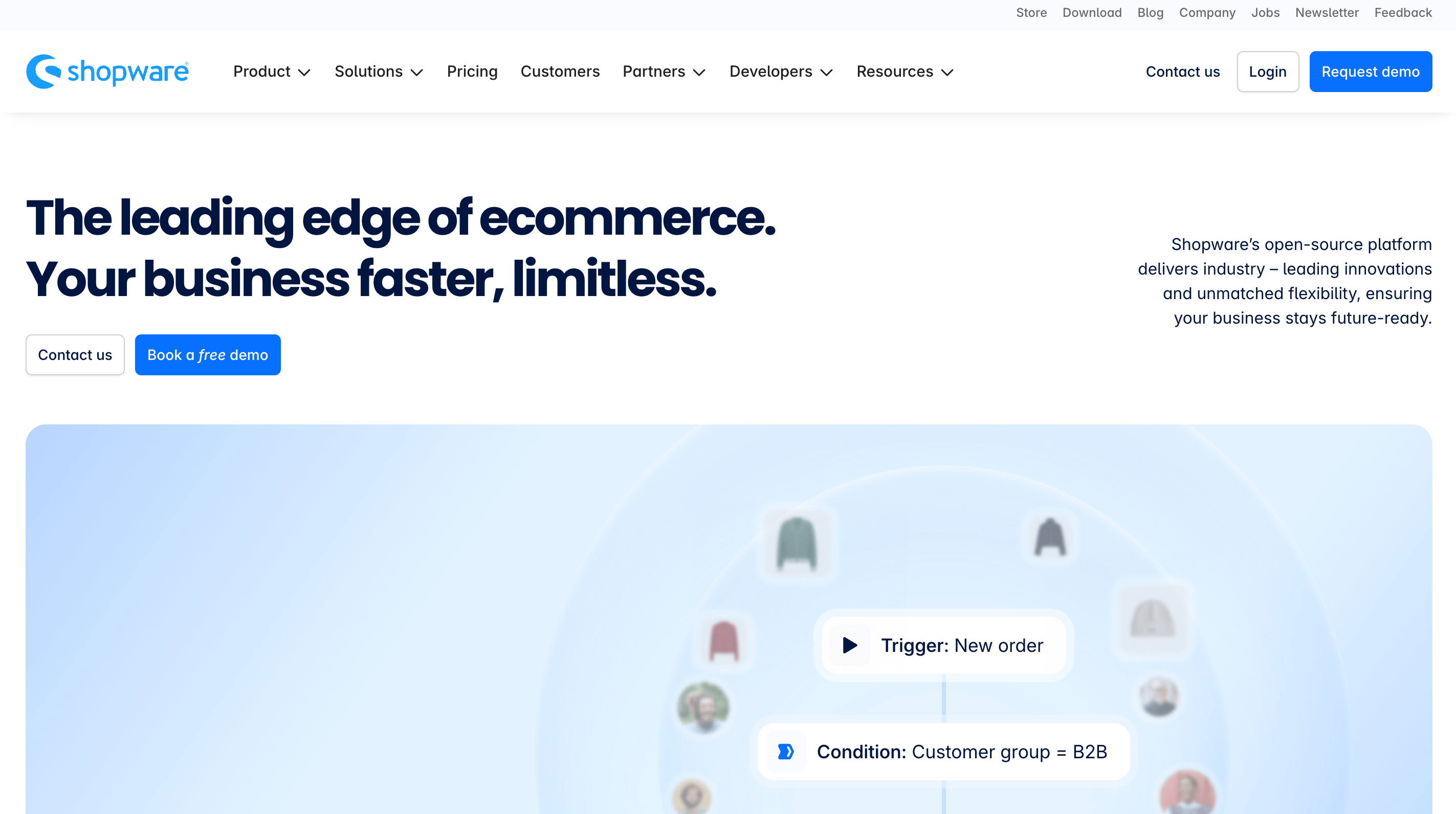
- Best For – Mid-market to large businesses operating in or targeting the European market, and those planning a headless commerce implementation.
- Key Strengths – Strong B2B features out-of-the-box, modern and flexible technology, and excellent rule-based selling tools.
- Key Thing to Know – Its presence is strongest in the DACH region (Germany, Austria, Switzerland), and it has a steeper learning curve than all-in-one platforms.
14. Volusion
Volusion stands out as one of the pioneering SaaS e-commerce platforms, comparable to BigCommerce and Shopify. It provides a comprehensive suite of tools designed to create and manage online stores efficiently. Known for its user-friendly interface, Volusion supports businesses in streamlining operations and enhancing customer experience.
- Best For – Small businesses looking for an all-in-one solution with built-in analytics and a simple site builder.
- Key Strengths – Clean, user-friendly interface and strong built-in analytics and reporting tools.
Key Thing to Know – It has lost significant market share to competitors like Shopify and BigCommerce, and its app ecosystem is less developed.
15. Weebly eCommerce (by Square)
Weebly eCommerce, now powered by Square, is a straightforward website builder with robust e-commerce capabilities. Competing directly with Wix, it shines in terms of usability and simplicity. This platform enables businesses to quickly set up online stores while benefiting from seamless integration with Square's payment solutions.
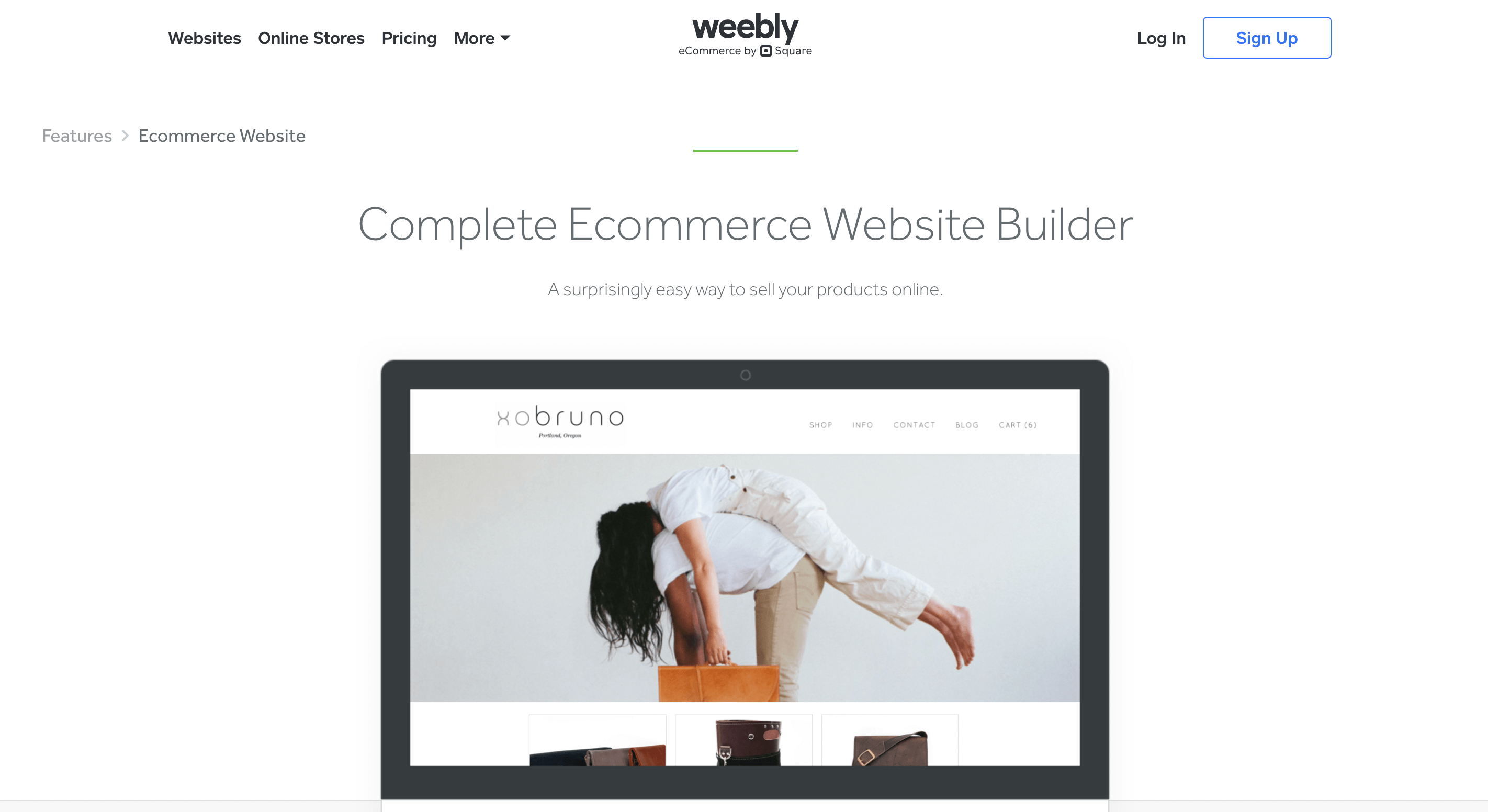
- Best For – Absolute beginners and micro-businesses that need a very simple, easy-to-set-up online presence with a store.
- Key Strengths – Extremely easy to use with a drag-and-drop builder and affordable pricing.
- Key Thing to Know – Its e-commerce features are more basic than dedicated platforms. It is best for stores with a very small number of products.
Get in touch
with our expert
Discuss your project requirements and get a free estimate.
Get in touch
with our expert
Discuss your project requirements and get a free estimate.
Top-rated E-commerce Platforms Comparison Table
This table provides a quick overview of key features and considerations to help you compare the platforms side-by-side.
| Platform | Best For | Starting Price | Ease of Use | Scalability | Best Feature | Transaction Fees |
|---|---|---|---|---|---|---|
| Shopify | Beginners to enterprises | $39/month | Very Easy | Excellent | App ecosystem | 0.6-2% (unless using Shopify Payments) |
| BigCommerce | Growing businesses | $39/month | Moderate | Excellent | Built-in features | None |
| WooCommerce | WordPress users | Free (+ hosting) | Technical | Good with development | Complete customization | Depends on payment gateway |
| Wix | Small creative businesses | $27/month | Very Easy | Good for small-medium | Drag-and-drop editor | None on paid plans |
| Squarespace | Visual brands & creatives | $36/month | Easy | Good for small-medium | Design templates | None |
| Salesforce | Large enterprises | Custom pricing | Complex | Enterprise | AI personalization | Custom |
| Adobe Commerce | Large businesses with developers | $22,000+/year | Complex | Enterprise | Customization flexibility | Depends on setup |
| Square Online | Brick-and-mortar expansion | Free plan available | Very Easy | Good for small-medium | Square POS integration | 2.9% + 30¢ (on free plan) |
| Big Cartel | Artists & makers | Free plan available | Very Easy | Limited | Simplicity & affordability | 2.9% + 30¢ (on free plan) |
| Shift4Shop | Cost-conscious businesses | Free (with processor) | Moderate | Good | Comprehensive built-in tools | None (with Shift4 processor) |
| PrestaShop | Technically-inclined users | Free (+ hosting) | Technical | Good with development | Extensive modules & themes | Depends on payment gateway |
| OpenCart | Small to medium businesses | Free (+ hosting) | Moderate | Good | Lightweight & straightforward | Depends on payment gateway |
| Shopware | European & headless commerce | Freemium model | Moderate | Excellent | Headless & rule-based selling | Depends on payment gateway |
| Volusion | Small businesses | $35/month | Easy | Good for small-medium | Built-in analytics | None on highest plan |
| Weebly | Absolute beginners | Free plan available | Very Easy | Limited | Extreme ease of use | 2.9% + 30¢ (on free plan) |
5 Costly E-commerce Platform Mistakes to Avoid
Select the wrong e-commerce platform and you create major obstacles for business growth. Many entrepreneurs make these common mistakes, but you can avoid them with careful planning and research.
1. Focus Only on Price
Budget matters, but a platform choice based only on low cost often leads to higher long-term expenses. Many budget platforms lack essential features, which forces expensive workarounds or a complete platform migration later. Always calculate the total cost of ownership, which includes transaction fees, app subscriptions, and development costs.
2. Ignore Mobile Experience
Mobile commerce now drives over 60% of online sales. A poor mobile experience will limit your revenue. Avoid platforms that offer basic mobile responsiveness instead of a fully optimized mobile store. Always test the mobile checkout process during your trial to ensure a seamless customer journey.
3. Overlook Future Growth
Many businesses select a platform that fits their current needs but cannot support their future growth. Your chosen platform must handle more traffic, larger product catalogs, and international sales without a complete rebuild. Select a platform with a proven record to support businesses at your target scale.
4. Underestimate Technical Needs
Self-hosted platforms like WooCommerce and Adobe Commerce offer great flexibility but demand significant technical skill. Businesses often misjudge the need for constant maintenance, security updates, and performance optimization. Be realistic about your team's technical ability or budget for professional support.
5. Neglect Essential Integrations
Your e-commerce platform must connect to your other business tools. Avoid platforms with limited integration options for your CRM, accounting, or marketing software. Always check the available integrations before you commit to ensure smooth data flow across your business.
Build Your Future in E-commerce Today
Your e-commerce platform choice will shape your business journey for years. The right platform serves as more than software. It forms the foundation that supports your growth, connects you with customers, and brings your vision to life.
Choose a platform that fits your current needs but also leaves room for future expansion. Use this guide's insights to make an informed decision, but do not let overthinking stop you from the start. Every successful online store began with one step: a platform choice and a first product launch.
FAQ
Which is the largest e-commerce platform?
As of 2025, Shopify and WooCommerce are among the largest e-commerce platforms globally, known for their extensive user base and comprehensive features that accommodate businesses of all sizes.
Which e-commerce platform is best for selling?
The best platform for selling varies based on your business needs. Shopify is renowned for its ease of use and powerful sales tools, while WooCommerce offers extensive customization options. Platforms like BigCommerce and Magento are also excellent for businesses with larger inventories.
What are the top e-commerce platforms for scalability?
BigCommerce, Magento, and Shopify Plus are top choices for scalability. These platforms provide robust infrastructure and advanced features that accommodate growing businesses and increasing demand.
Expert in creating engaging written content. Skilled at analyzing audience behaviors and refining strategies to align business goals with customer interests. Proven ability to craft content that connects deeply with audiences. Passionate about staying current with trends to boost engagement.
Expert in creating engaging written content. Skilled at analyzing audience behaviors and refining strategies to align business goals with customer interests. Proven ability to craft content that connects deeply with audiences. Passionate about staying current with trends to boost engagement.

